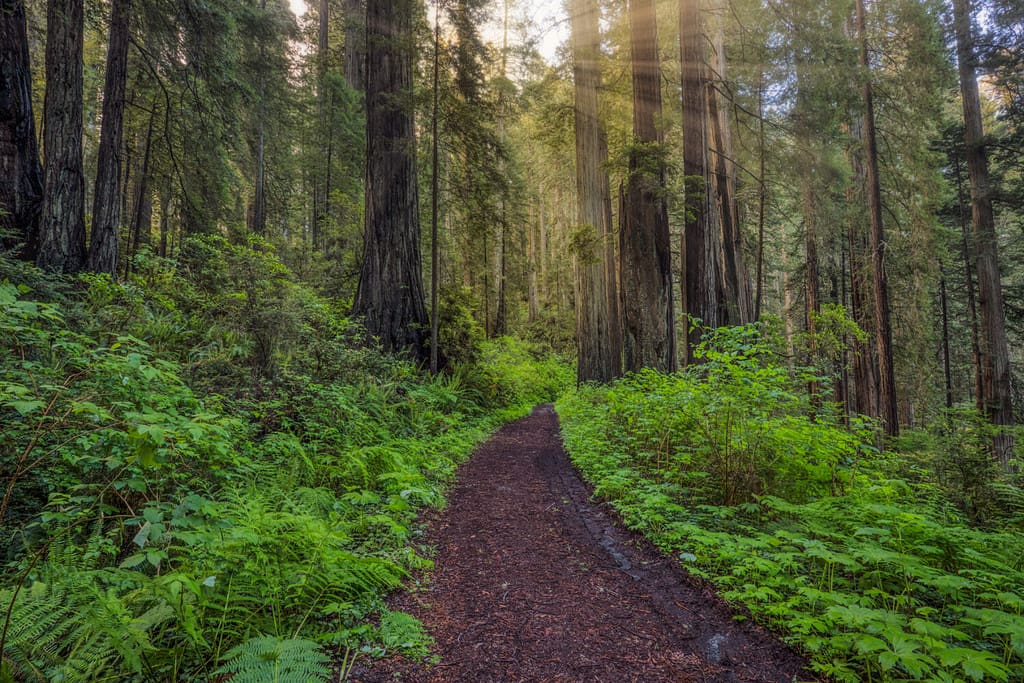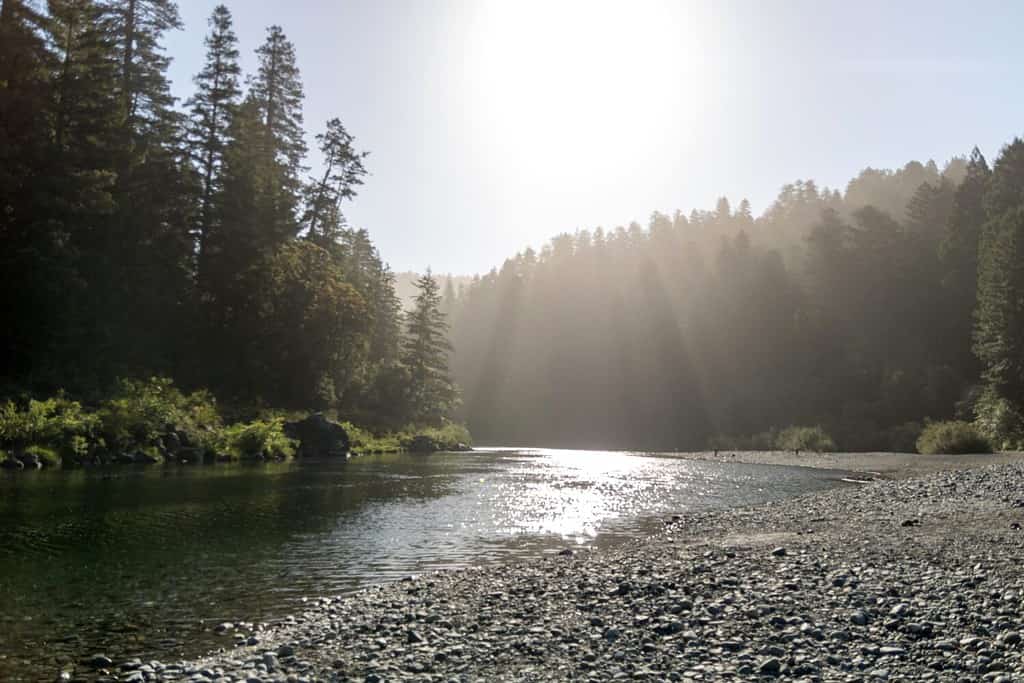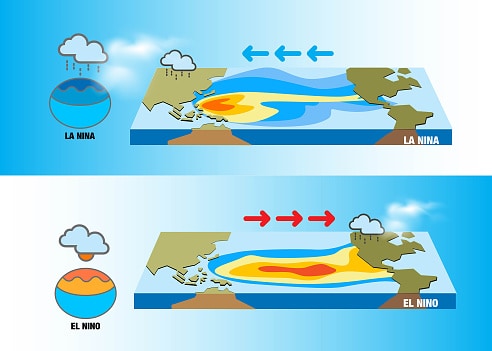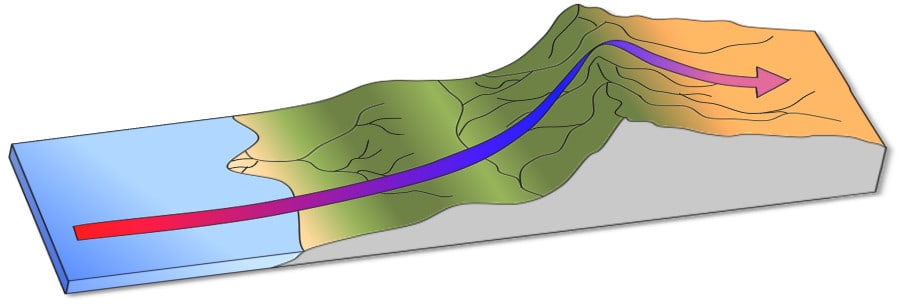I was really excited about going on a road trip. It was the first time I was going on such a long journey, and I couldn’t wait to explore new things about myself. The idea of driving on wide-open roads made me feel so happy and excited. The trip from San Antonio, Texas, to Los Angeles, California, would take two whole days of driving, with lots of breaks in between. I was curious about what the weather would be like in California, so I started looking up information about the different seasons and how they changed. I was surprised to learn that I would not encounter the typical Californian sunshine but rain! So, I decided to delve into when it rains in California and what makes it unique compared to the rest of the U.S.
Read on to discover everything about the rainy season in California!

Sunbeams and pathway through ferns and redwood trees, Beautiful Del Norte Coast Redwoods State Park, Damnation Creek Trail, California.
©Danita Delimont/Shutterstock.com
California’s Climate
California’s climate is diverse, ranging from a Mediterranean-like climate with warm, dry summers and mild, wet winters to alpine tundra.
Typically, California experiences its rainy season from October to April. The most substantial rainfall usually occurs between December and February.
In Southern California, there’s a monsoon season from mid-July to September. With such a focused wet season, a few months of low rainfall can significantly affect the state’s water supply.
Droughts are a frequent occurrence in California, and they can persist for many years.

Raindrops fall from a black umbrella concept for bad weather, winter, or protection.
©Brian A Jackson/Shutterstock.com
What Causes Rain in California?
Several factors contribute significantly to California’s abundant rainfall, including:
Pacific Storms
California’s extensive 840-mile coastline along the vast Pacific Ocean, which covers 60 million square miles from California to China, exposes the state to moisture-laden air from the ocean. During the rainy season, Pacific storms bring this moisture, resulting in substantial rainfall.
In fact, the rainiest place in California is Smith River, where the average precipitation reaches 80.03 inches annually.

In 1981, Smith River was included as a part of the National Wild and Scenic Rivers System. In 1990, several parts of the river were redesignated.
©Kaitlind Fasburg/Shutterstock.com
Jet Stream
The Jet Stream is like a fast-flowing river of air high in the Earth’s atmosphere. It doesn’t stay in one place but moves around. When the Jet stream is strong and positioned over California, it can direct storms toward the state. This can lead to increased rainfall, especially during winter months.

Jet stream on the Pacific Ocean.
©https://upload.wikimedia.org/wikipedia/commons/7/79/Greatcircle_Jetstream_routes.svg – Original
Orographic Lifting
Orographic Lifting is when air is forced upwards by mountains and other elevated terrain. This is important for California’s rainfall because as the air rises, it cools, and water vapor condenses into clouds. When it cools even more, it can cause rain or snow. California’s landscape, especially its mountains and coastal ranges, can make rainfall stronger thanks to this process.
Atmospheric Rivers
Atmospheric Rivers are long, narrow currents of water vapor in the atmosphere that can cause severe rain and snow. These narrow bands of moisture-laden air can transport large amounts of water vapor from the tropics to California. Atmospheric rivers are a major contributor to heavy rainfall in California.

This image shows a large atmospheric river flowing across California.
©United States Naval Research Laboratory, Monterey, Public domain, via Wikimedia Commons – Original / License
El Niño and La Niña
El Niño and La Niña are temporary climate patterns that can affect California’s weather, with El Niño bringing wetter conditions and La Niña leading to drier weather.

Climate change El Niño and La Nina affect Central and South America, the Caribbean, Southeast Asia, and eastern and southern
Africa
.
©Papapapong/iStock via Getty Images
Conclusion
In short, California’s rainy season happens because of weather and geography. Big storms from the ocean and special windy rivers in the sky bring lots of rain. It’s almost April now, and I’m glad there might be less rain and more sun. I’m excited about this trip and plan to enjoy every moment. I hope you liked learning about California’s rainy season with me.

Atmospheric rivers in California can induce
floods
.
©Danaan/Shutterstock.com
Thank you for reading! Have some feedback for us? Contact the AZ Animals editorial team.









